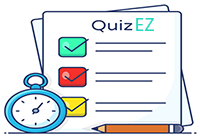



| Question | Answer | |
|---|---|---|
| 11 |
Information comes from the brain either through words or through muscle activity, such as gesturing, writing or drawing. This stage of information processing is referred: |
OUTPUT |
| 12 |
The stage in which perceived input is interpreted, categorized, placed in a sequence or related to previous learning is called: |
INTERGRATION |
| 13 |
Answering a question on demand and putting thoughts into words before we speak is an information process called: |
OUTPUT |
| 14 |
Most memory difficulties occur in the area of short term memory, which can make it difficult to learn new material without many more repetitions that usual; this problem affects information |
STORAGE |
| 15 |
Dyslexia is a specific learning disability that hinder the learning of our students and is: |
congenital, a developmental condition, and neurologically based |
| 16 |
The cause of dyslexia: |
Has not been confirmed |
| 17 |
The dyslexic learner may act out by displaying characteristics that: |
demonstrate carelessness |
| 18 |
It's encouraging to find that dyslexic learners: |
Have a good VISUAL EYE, are IMAGINATIVE, are SKILLFUL with their hands |
| 19 |
When teaching the dyslexic learner, the master educator should: |
Review the learner's past academic file if available; understand the student's specific difficulties; gain an understanding of the student's learning style |
| 20 |
M.E will assist the dyslexic learner with: |
Time management, organization, sequencing |